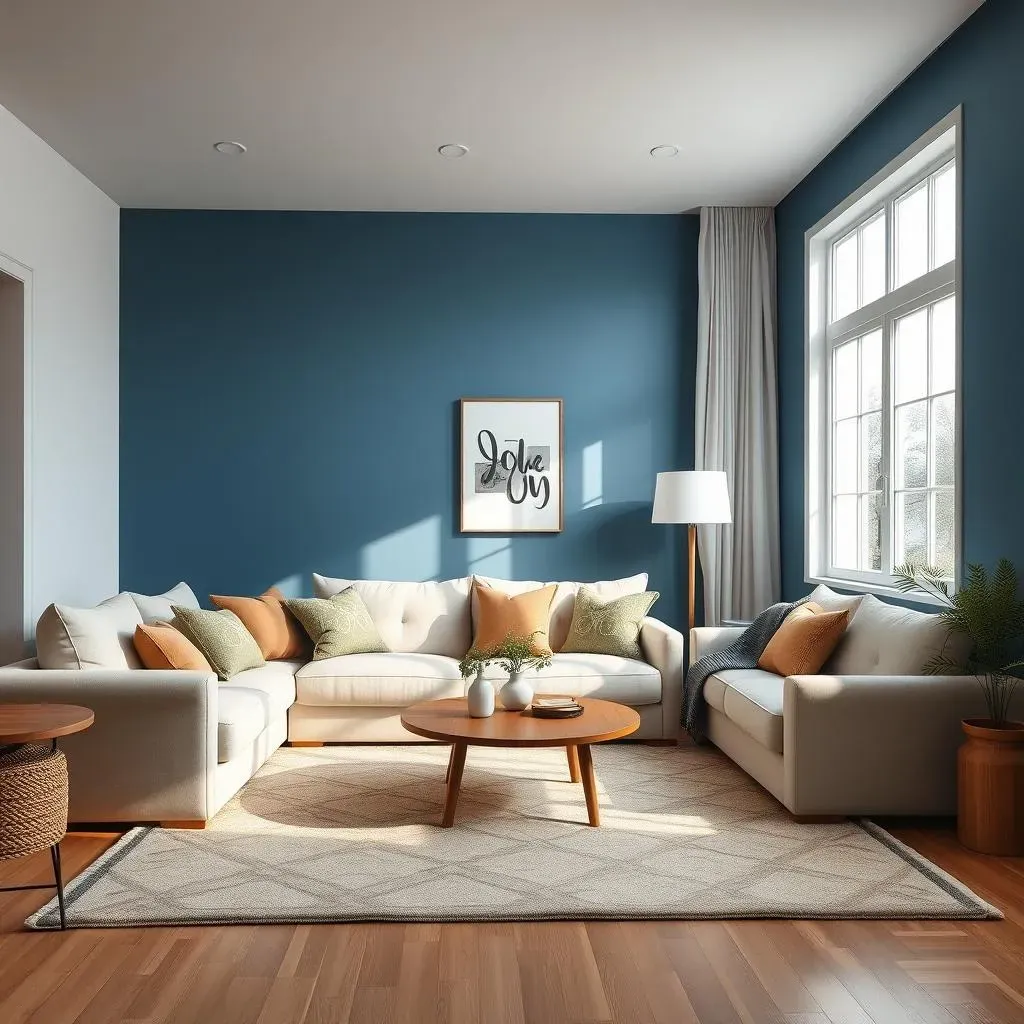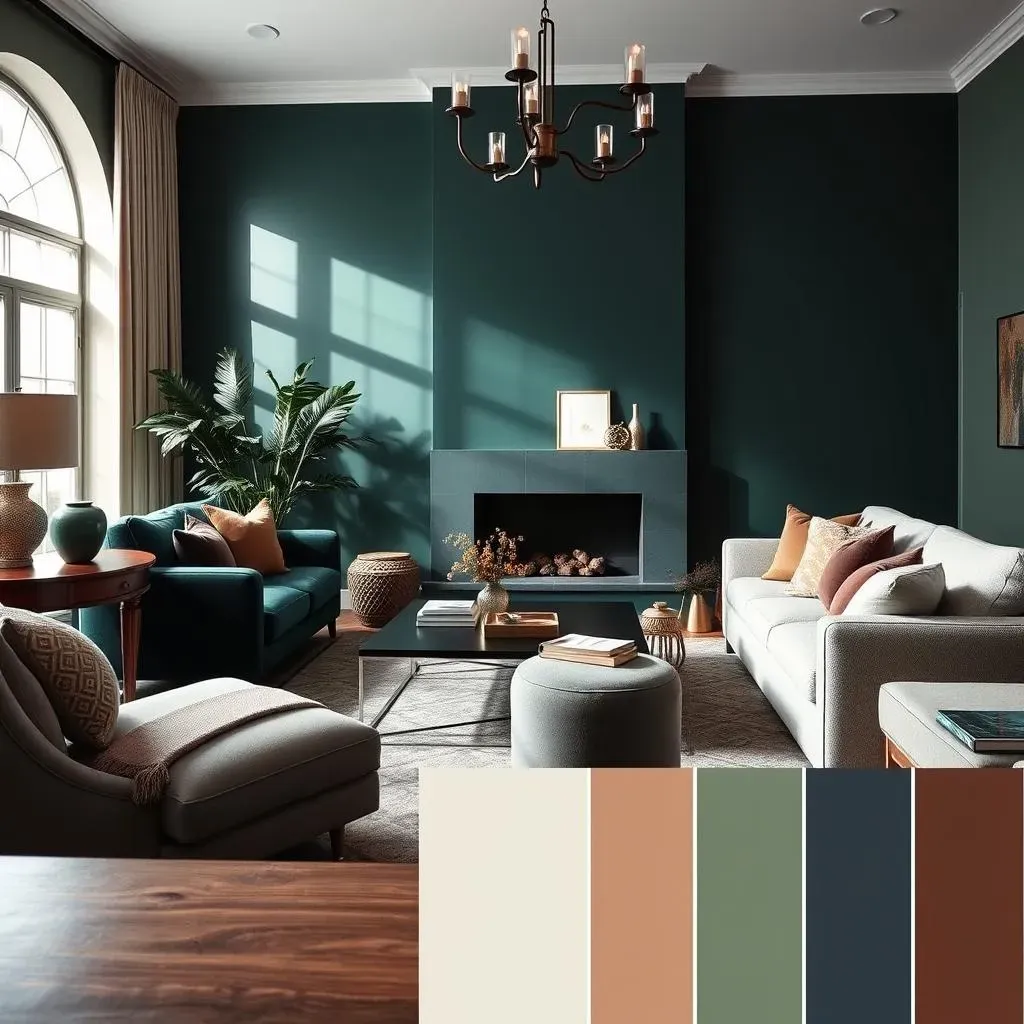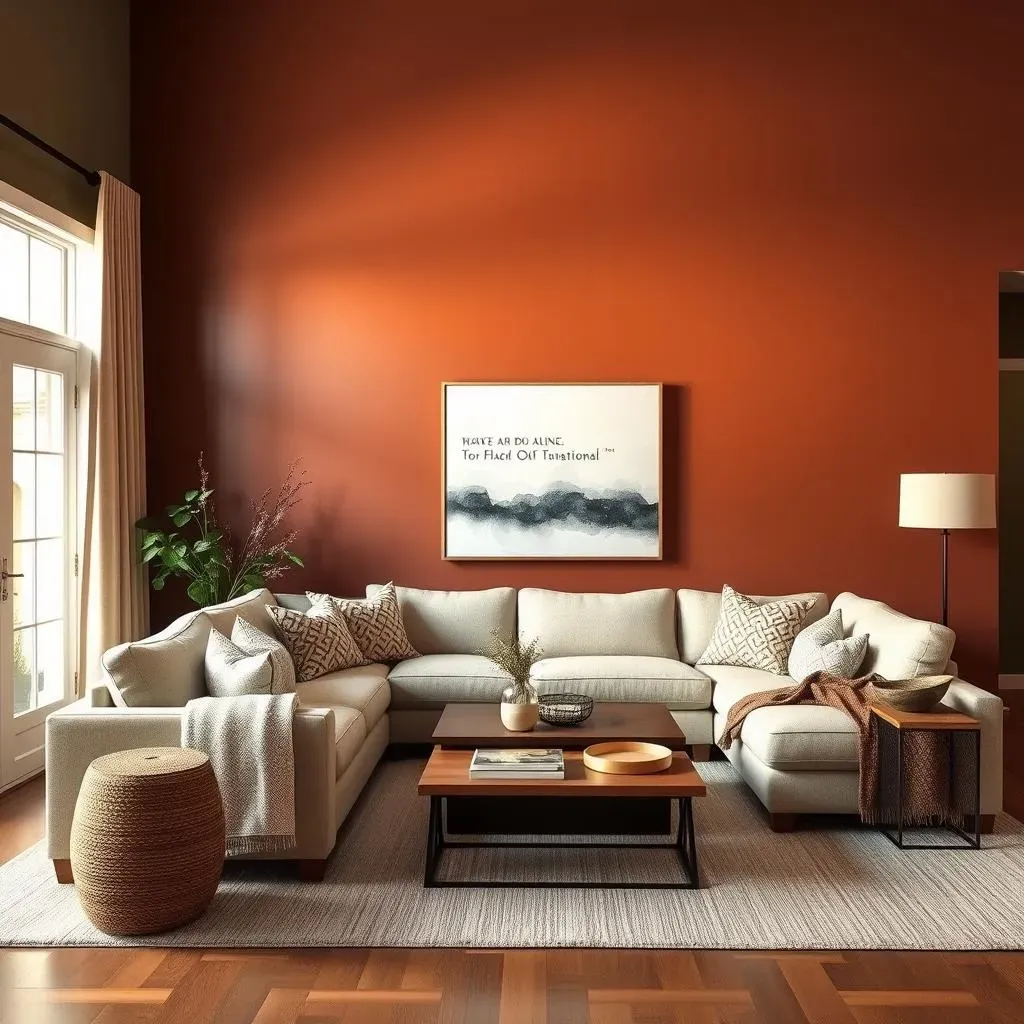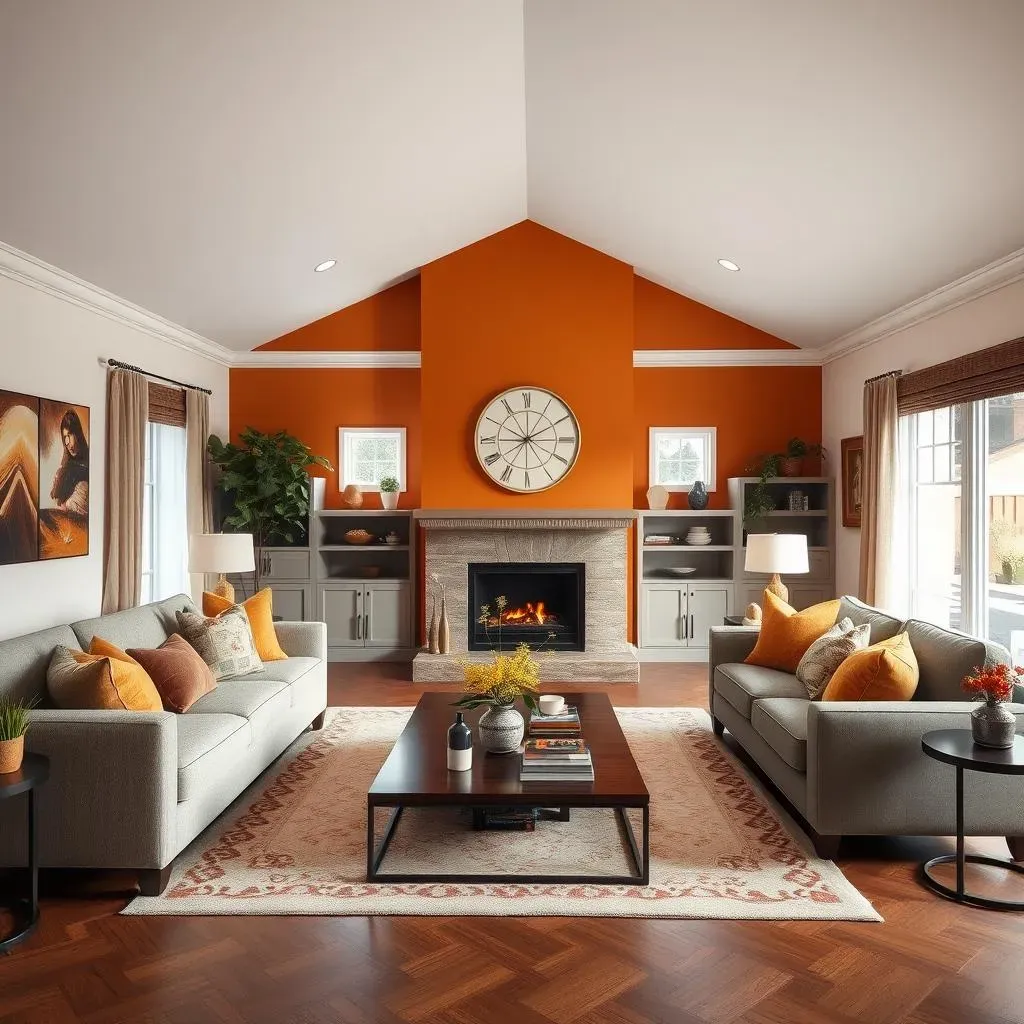Table of Contents
Ever feel like your family room needs a little something extra? Maybe it's feeling a bit blah, or perhaps it just lacks that "wow" factor. Well, you're not alone! One of the easiest and most impactful ways to transform your space is by adding an accent wall. But before you grab a paintbrush, let's talk about color. Choosing the right accent wall color ideas for family room can seem daunting, but it doesn't have to be. This article will guide you through the process, exploring different color options and how to implement them effectively. We'll cover how to pick a color that complements your existing décor, consider the mood you want to create, and offer real-world examples to inspire you. Think of this as your go-to guide for turning your family room into a space you'll love spending time in. Ready to get started? Let's dive in!
Choosing the Right Accent Wall Color for Your Family Room

Choosing the Right Accent Wall Color for Your Family Room
Considering the Room's Purpose and Mood
Okay, so you're thinking about an accent wall. Awesome! But before you go wild with swatches, let's get real. What's the vibe you want in your family room? Is it a place for cozy movie nights? Or maybe a lively space for game nights? The color you pick should match the room's purpose. A deep, calming blue might be perfect for a relaxing retreat, while a vibrant yellow could energize a family game room. Think about how you want to feel when you're in the space. Don't just pick a color because it's trendy; pick it because it makes you happy and fits the room's function.
Also, consider the lighting in your family room. Natural light can make colors appear brighter and warmer, while artificial light can change how colors look, sometimes making them appear duller. So, test paint swatches on your wall and check them at different times of the day. This way you can see how they interact with the light in your room. It's all about making sure the color you love in the store looks just as amazing in your actual space.
Harmonizing with Existing Decor
Now, let’s talk about your existing furniture and decor. Your accent wall shouldn't be a random color that clashes with everything else. Instead, it should be a color that complements your sofa, rugs, and other accessories. If your furniture is mostly neutral, you have more freedom to choose a bold accent color. But if you have a colorful sofa, you might want to go for a more subtle accent wall color so it doesn't feel overwhelming. Think of your room as a whole, not just individual pieces. It's like a band, all the instruments need to play well together, or it just sounds bad.
Another thing to consider is the color wheel. Colors that are opposite each other on the wheel (like blue and orange) create contrast and can make a room feel more energetic. Colors that are next to each other (like blue and green) create harmony and can make a room feel more peaceful. So, use the color wheel as a guide, but don’t be afraid to experiment. It's your space, after all, so have some fun with it!
Consideration | Questions to Ask |
|---|---|
Room Purpose | What activities happen here? How do I want to feel in the room? |
Lighting | How does natural and artificial light affect the color? |
Existing Decor | Does the color complement or clash with my furniture and accessories? |
Exploring Different Accent Wall Color Ideas for Family Rooms

Exploring Different Accent Wall Color Ideas for Family Rooms
Bold and Dramatic Colors
Alright, let’s get into the fun stuff, the colors! If you’re aiming for a bold statement, consider deep jewel tones like emerald green, sapphire blue, or even a rich burgundy. These colors can add a touch of luxury and sophistication to your family room. They work especially well in rooms with lots of natural light, as the light can help to bring out the depth of the color. But don't think that a dark color will make your room look smaller, with the right lighting and decor, it can actually make it feel more cozy and intimate. Just make sure to balance the bold color with lighter elements in the room so it doesn't become too overwhelming.
Another option for a dramatic look is to go for a dark, moody gray or charcoal. These colors can create a very sophisticated and modern vibe. They also work well with a variety of accent colors, so you can easily change things up later on if you want. But if you are afraid of commitment, you can try it out on small areas first, like a small wall or some decor pieces. That way, you can see if you actually like the color in your space before you paint an entire wall.
Calming and Natural Tones
Now, if you're going for a more relaxed and serene atmosphere, consider using calming natural tones. Think soft blues, muted greens, and warm grays. These colors can create a very peaceful environment, perfect for a family room where you want to unwind and relax. They also work well in smaller spaces, as they can make a room feel more open and airy. Light and soft colors can make your space look bigger, and that's a great way to make your family room feel more welcoming. It’s like giving your room a big, relaxing hug.
Another great option is to use earth tones, like beige, tan, or taupe. These colors are very versatile and can work well with a variety of different decor styles. They also have a very grounding effect, which can make a room feel more secure and comfortable. These colors are like the neutral tees of the paint world, they go with everything and are always a safe bet. They can also be a good base for layering other colors and textures, so you can add your own personal touch.
Color Category | Color Examples | Vibe |
|---|---|---|
Bold & Dramatic | Emerald Green, Sapphire Blue, Burgundy, Charcoal | Luxurious, Sophisticated, Modern |
Calming & Natural | Soft Blues, Muted Greens, Warm Grays, Beige, Tan, Taupe | Relaxed, Serene, Peaceful |
Unexpected and Playful Colors
Feeling a little adventurous? Don't be afraid to go for something unexpected and playful! Think vibrant corals, sunny yellows, or even a fun turquoise. These colors can add a pop of personality to your family room and make it feel more unique. They're perfect for spaces where you want to inject some energy and fun. But remember, you don't have to go overboard. You can use these colors as accents, rather than painting the entire wall, like a geometric design or a stripe. It’s like adding a little spice to your favorite dish, just enough to make it interesting.
Another option is to use a pastel color, like light pink, lavender, or mint green. These colors are soft and playful, and they can create a very lighthearted and cheerful atmosphere. They also work well in rooms with lots of natural light, as they can make the space feel even brighter and more inviting. These colors are like a breath of fresh air, bringing a sense of joy and happiness to your family room. It’s about making your space your own and showing off your personality, do not be afraid to be different.
"Color is a power which directly influences the soul." - Wassily Kandinsky
How to Implement Your Accent Wall Color Ideas in Your Family Room

How to Implement Your Accent Wall Color Ideas in Your Family Room
Preparing Your Wall for Paint
Alright, so you've picked the perfect color, now what? Well, before you start slapping paint on the wall, you need to do some prep work. Trust me, it's worth it! First, make sure your wall is clean. Wipe it down with a damp cloth to remove any dust or dirt. Then, fill any holes or cracks with spackle and let it dry. Once it's dry, sand it down so it's nice and smooth. This step is crucial for getting a professional-looking finish. It's like prepping a canvas before you paint, it makes all the difference.
Next, grab your painter's tape and carefully tape off the edges of your wall. This will help to create clean lines and prevent paint from getting on your ceiling or trim. Make sure the tape is firmly pressed down, so no paint can sneak under it. If you're painting over a dark color, you may need to apply a primer first. Primer helps the new color adhere to the wall better and prevents the old color from showing through. It's like a base coat for your nails, it helps the color to pop and last longer. It might feel like an extra step, but it will save you time and headaches in the long run.
The Actual Painting Process
Okay, now for the fun part, actually painting! Start by cutting in around the edges with a brush. This means painting a thin line of paint along the ceiling, trim, and any other areas that you taped off. This helps to create a crisp, clean edge. Once you've cut in, it's time to grab your roller and start filling in the rest of the wall. Make sure you use even strokes and don't overload your roller with paint. Applying too much paint can cause drips and streaks, which you definitely want to avoid.
Apply at least two coats of paint, allowing each coat to dry completely before applying the next one. This will ensure that you get full, even coverage. Once the final coat is dry, carefully remove the painter's tape. Voila! You have a beautiful, newly painted accent wall. If you want, you can even add some decorative touches, like frames, mirrors, or shelves. It’s all about making the space feel like you, and a space that you want to spend time in. Now, stand back and admire your handiwork, you did it!
Step | Action | Why it's Important |
|---|---|---|
Clean Wall | Wipe down the wall with a damp cloth | Removes dust and dirt for better paint adhesion |
Fill Holes | Fill cracks with spackle and sand smooth | Creates a smooth surface for painting |
Tape Edges | Apply painter's tape to edges | Ensures clean lines and prevents paint from bleeding |
Apply Primer | If needed, apply primer to the wall | Helps with paint adhesion and coverage |
Cut in Edges | Use a brush to paint along the edges | Creates a crisp, clean edge |
Roll Paint | Use a roller to fill in the rest of the wall | Ensures even coverage |
Multiple Coats | Apply at least two coats of paint | Ensures full, even color |
Remove Tape | Carefully remove the painter's tape | Reveals your finished accent wall |
